As we clean up the garden this weekend, I found myself repeatedly coming back to visit the Gatsby Pink Oak leaf Hydrangea I planted earlier this year. These new oakleaf hydrangeas are still small and too new and immature to have bloomed, but that hasn’t stopped them from putting on quite a leaf show in the autumn.

Described as mahogany red, the fall leaf color of this oakleaf hydrangea is richer and deeper than anything else in my colorful autumn garden. I really can’t wait to see these mature into larger plants. They will be the star of our back garden for sure. As we raked leaves, the stem of one of the plants was broken. I have no idea if it will root in water (I figure it is worth a try), but even if it doesn’t, this simple display of deep purple leaves in a clear vase on my kitchen sink amazes me.
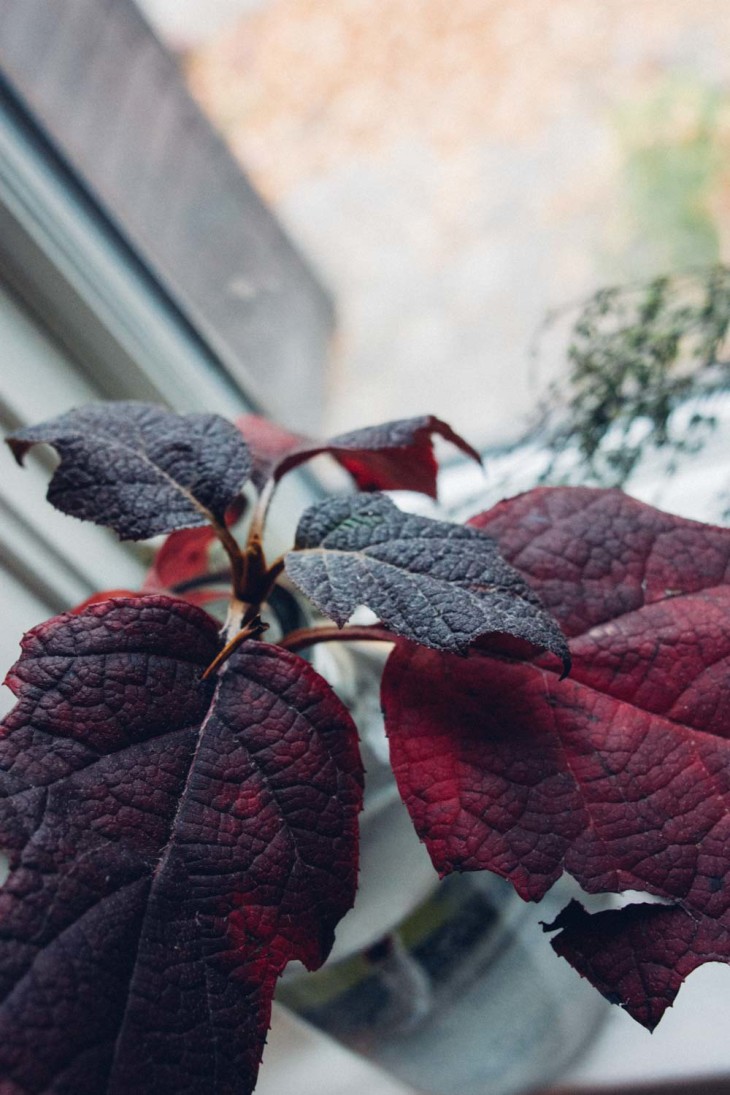
Hydrangea Quercifolia and Fothergilla – Plants that are True Friends and Companions
At the moment, I have these planted against my house as foundation plantings. I think the red on the black background of the house is going to be spectacular! But am thinking to also add some fothergilla nearby.
Why?
In researching the oak leaf hydrangea, I learned that this native was discovered by John Bartram. It is also the state flower of Alabama (where he discovered it).
Dr. John Fothergill of London commissioned Bartram to make the journey to Florida and the southern USA where he made the discovery. (documented in Travels of William Bartram). While this is sort of interesting, what I most love is that apparently, John Bartram and Dr. Fothergill were very good friends. Fothergilla (also a North American native shrub) was named for the doctor by Dr Alexander Garden, who discovered it. We always talk about plant partners and companion plants – speaking purely of habitat and physical characteristics. But I like the idea of planting them together not just because they are naturally complementary but because it is really like putting two old friends together.
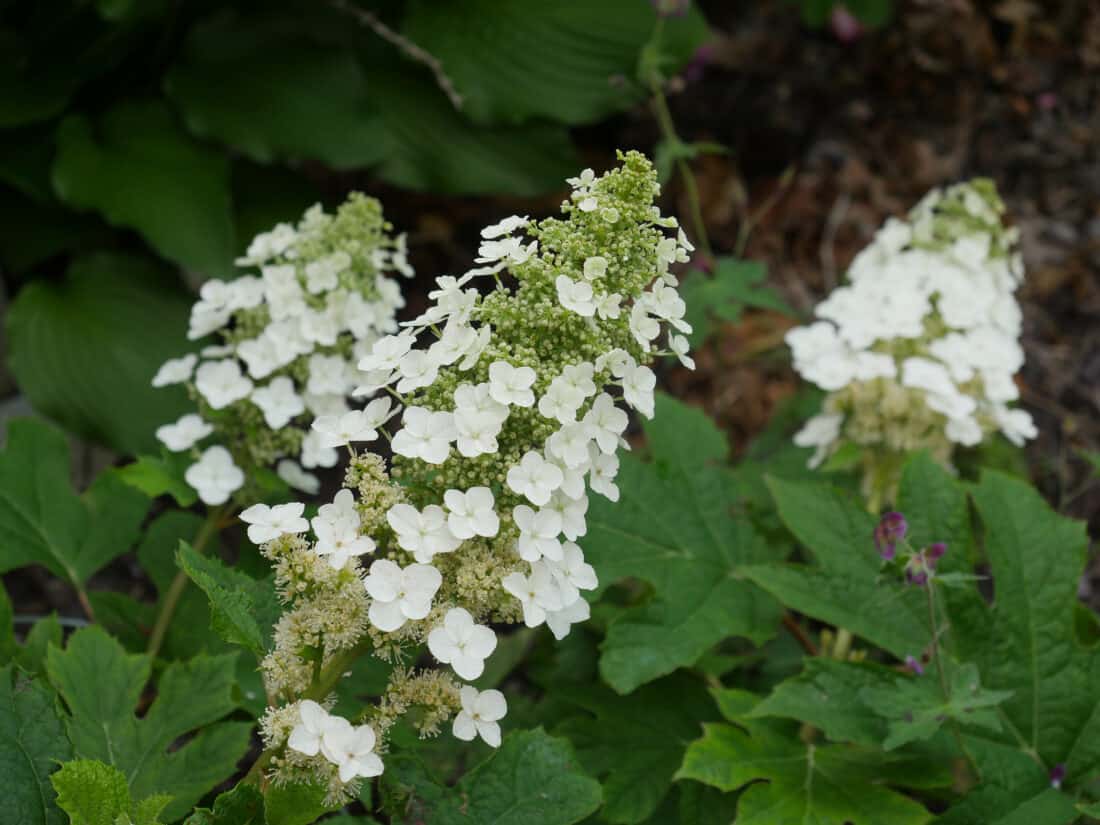
Hydrangea Quercifolia – the North American Native Hydrangea
Native to Georgia and the Southeast US, Hydrangea quercifolia grows best in a woodland situation on alkaline soils. It is partial to almost full shade. It grows in mixed hardwood forests, along streams, and on forested hillsides, usually on calcareous soils, and often where limestone is at the ground surface. Hydrangea quercifolia is an understory shrub, often in the shade of large oaks, hickories, magnolias, and American beech.
‘Snowflake’ is one of the most spectacular varieties with enormous 15 in. long white panicles that can extend upward, outward or pendulously. The heaves are coarse-textured, leathery, and oak-like. It burnishes deep burgundy in the fall and holds its handsome leaves well into December. The unique, two-toned double-flowered effect is created when numerous tiered sepals first emerge white, while older ones below develop dark, dusty pink shades with age.
Showcase it in a favored location and use the flowers, fresh or dry, for attractive arrangements.
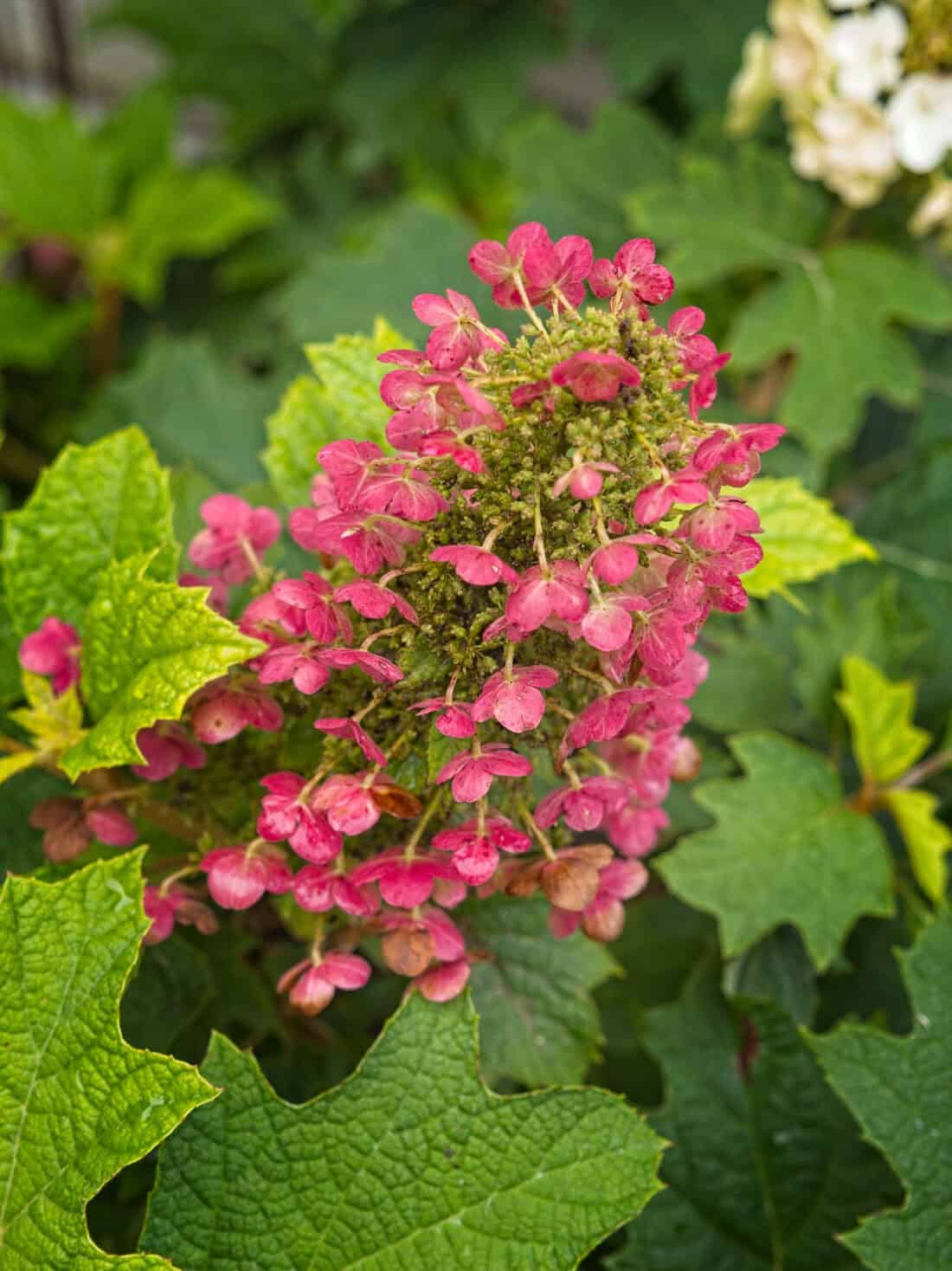
Hydrangea Quercifolia Update 2018:
In the winter of 2018, moles attacked and killed all but two of these plants in the back of my house. I have found that voles are especially active in the winter around my house, and I have a theory that they are attracted to the heat index that the house provides. But it makes any sort of deciduous shrub (the vole here seem to prefer woody plants) extra vulnerable.
I moved the two survivors away from the house – still in the back garden but not so close to the winter warmth.
The new spot is in full sun throughout the summer and winter in very well-drained soils (it can be borderline sandy) at the top of a slope. After a couple of years, they began to bloom reliably on old wood.
If you plant new hydrangeas, you should know that winter-damaged stems and stems that are new growth will not form flower buds. There are often questions about why my hydrangea didn’t bloom – and the answer almost always lies in winter damage or pruning that pre-empts the flower. Flowering stems will grow in a year and then will not flower until they are at least two years old.
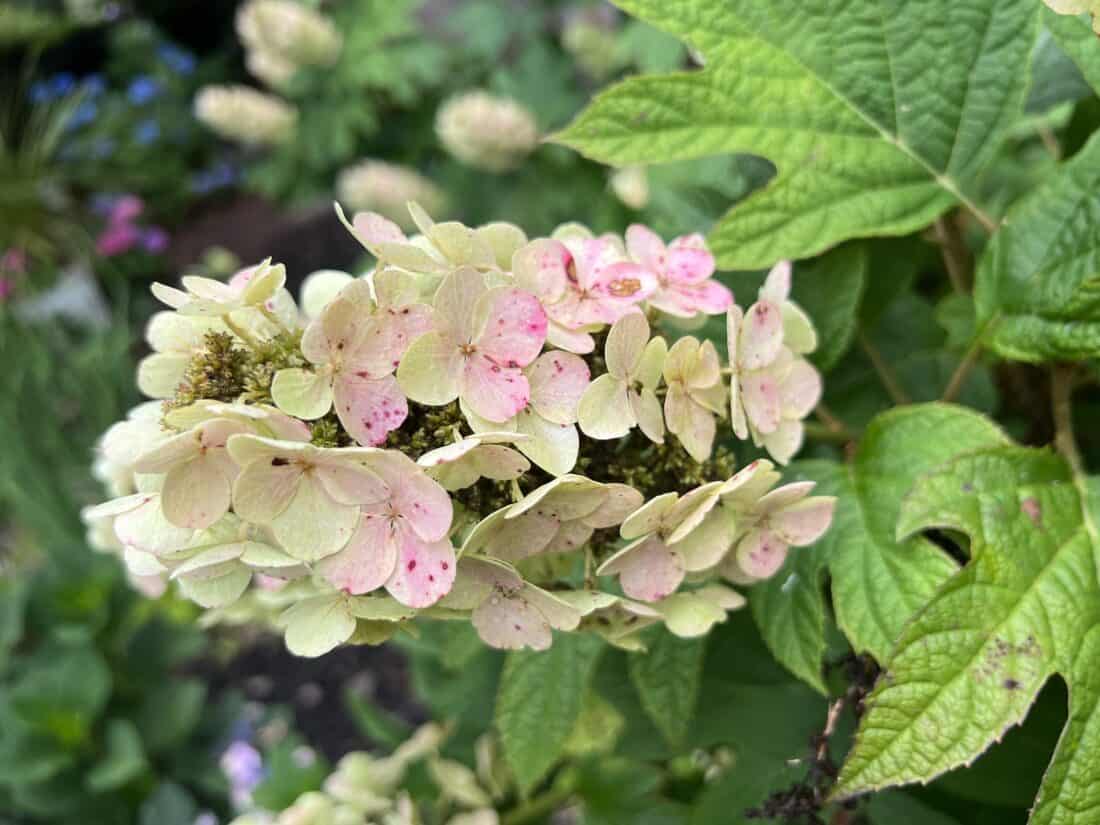
In general, the flowers of this shrub last a very long time and they often dry on the plant, providing nice winter interest and texture as well. They are great for cutting and drying in a vase as well and will hold their color nicely.
Oak leaf hydrangea Update 2023:
The two surviving hydrangea shrubs have continued to thrive and are now in part shade due to another shrub and an oak tree growing up around them. I never prune them (which ensures maximum bloom potential), and they have maintained a compact habit that has not had any issues (like leggy growth, diseased branches, or any sort of pest damage). They are now each about 4 feet tall and seem to have maxed out in height and are getting larger in width only at this point (5 years later).
Having planted a huge variety of hydrangeas over the years (in my garden), I’ve become partial to oak leaf hydrangeas. They are by far the most versatile and reliable (with the exception, perhaps, of lime-light hydrangeas). I suspect this has a lot to do with the fact that oak leaf hydrangeas are native to North America, and I live in New England. I am not sure why, but I’ve never had powdery mildew problems with any of my hydrangeas. (it is a common problem). My theory is that perhaps it is because there is a strong prevailing wind that keeps airflow high. If you have issues with powdery mildew, I suggest trying to increase airflow around the plant either by pruning or moving it to a more open location.
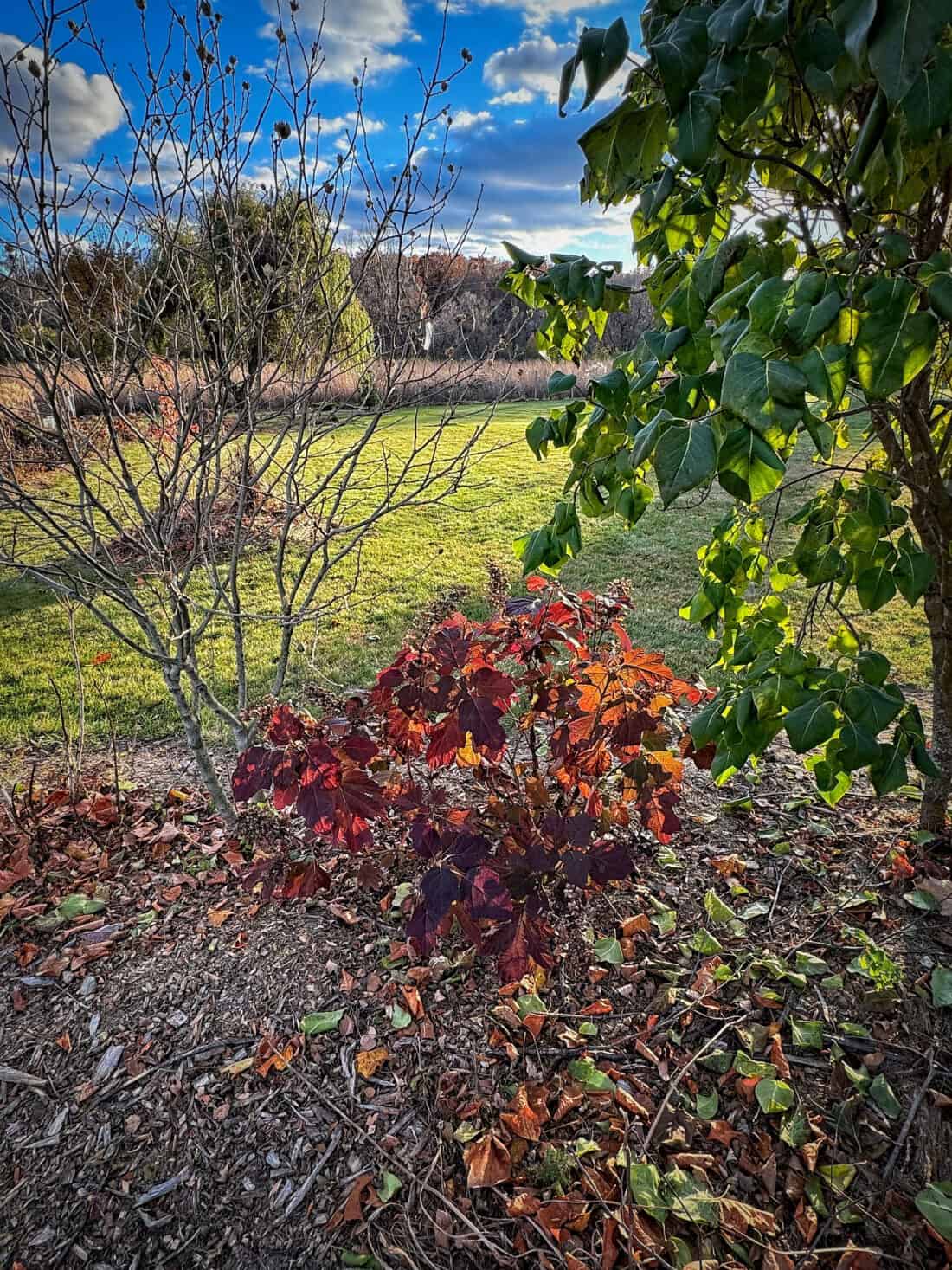
+comments+